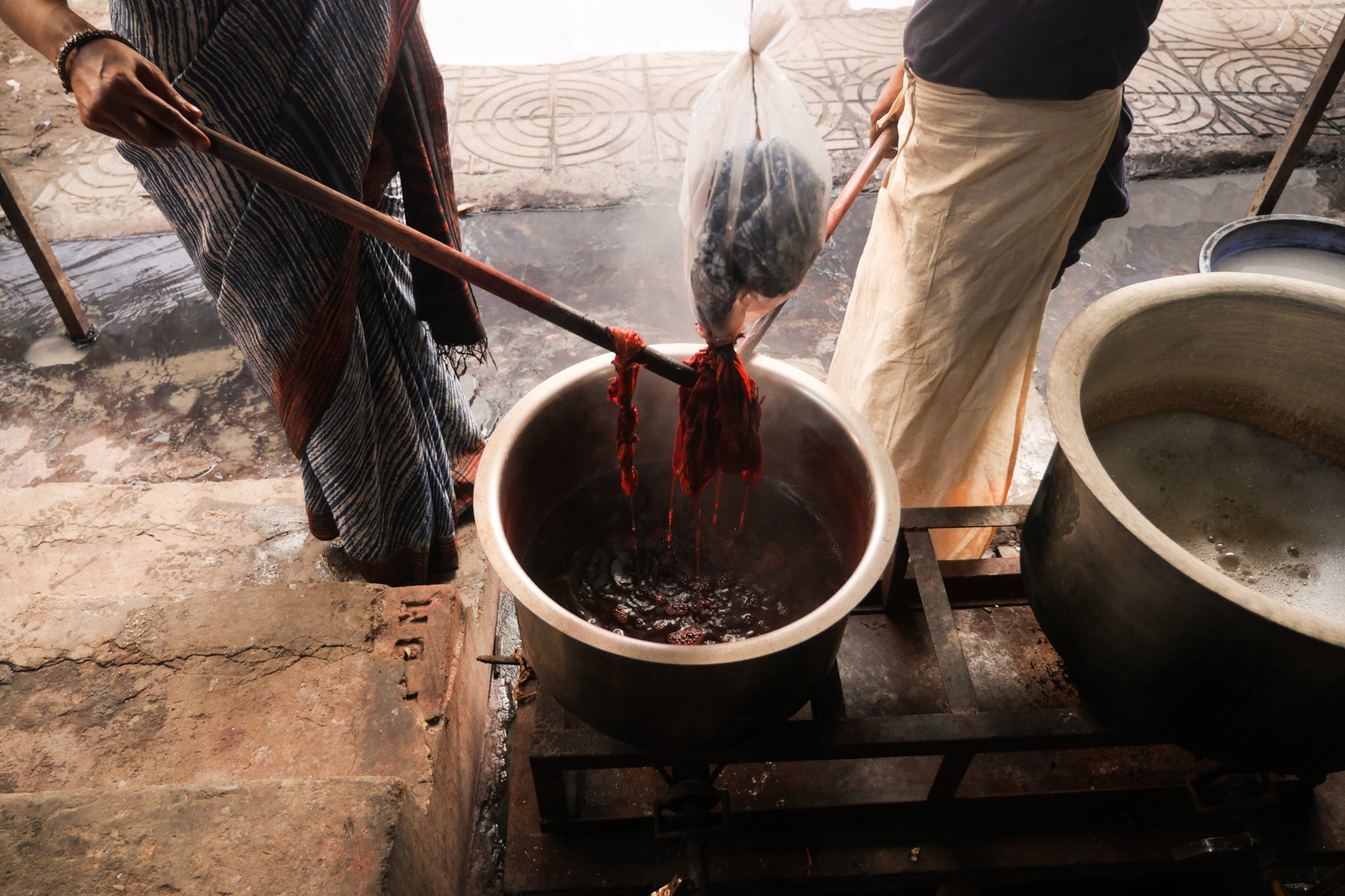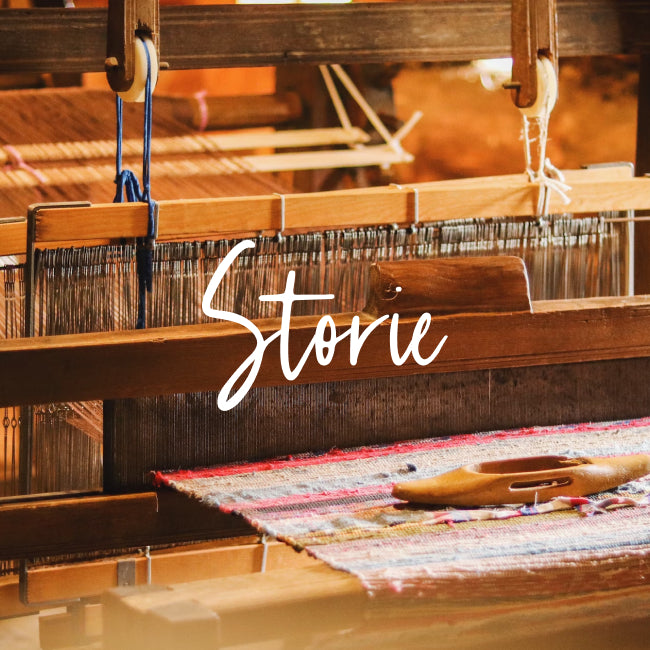CRAFT STORY 8#BANGLADESH NATURAL COLOURS
In the busy, bustling heart of Dhaka, in a court yard behind an office building, there is a small workshop, a crafters laboratory of colour. Here we meet a diligent team of pigment makers and dyers, working out recipes for tones and colouring cloth. We are shown how to mix indigo for blue, marigolds for yellow, madder for red and catechu for browns. The open space is shaded by sheets of drying cloth.

The building is home to “Aranya” a Bangladeshi craft company with “a philosophy rooted in natural aesthetics and responsible living.” The enterprise has gathered a group of designers and artisans with a noble goal to revive the country’s natural dying techniques.
The organisation was set up in the 90’s as a grassroots movement to encourage and protect the country’s craft heritage by researcher, social activist and crafts expert Ruby Ghuznavi. Since then it has grown into a” thriving ecosystem of over 3,000 artisans across Bangladesh.” They are one of the earliest members of the World Crafts Council from Bangladesh, and a member of the WFTO.
The building is a hive of activity. We move from the dyeing centre, where the hum and continuous honking of the city's traffic went on beyond the enclosures walls, to a series of rooms where artisans experiment with block printing. Inside there is woodblock library, packed with stamps dating back to the start of the organisation.
 A craftsman sits on the floor, carefully cutting a motif into a chunk of wood. He learnt this skill from his father who worked here before him. Upstairs there are rooms where Nakshi kantha embroidery from rural regions is quality checked, and new patterns and designs put together. Threads for the fine embroidery are stained using vegetable dyes in the courtyard below, and bundles of this naturally dyed yarn are prepared for crafters in rural clusters across the country.
A craftsman sits on the floor, carefully cutting a motif into a chunk of wood. He learnt this skill from his father who worked here before him. Upstairs there are rooms where Nakshi kantha embroidery from rural regions is quality checked, and new patterns and designs put together. Threads for the fine embroidery are stained using vegetable dyes in the courtyard below, and bundles of this naturally dyed yarn are prepared for crafters in rural clusters across the country.

Each colour has a multitude of tones, and it’s own unique story. Where possible, dyes are made using waste or by products of other local industry. Used marigolds are saved during wedding season, the petals are gathered once the the party is finished inorder to make rich yellows. Tea waste is swept from the factory floor, for different beiges and brown. Woodchips are collected from local saw mills. Pomegranate peel is repurposed as a catalogue of ochres, terracotta, greens and even dark greys.

The deciduous catechu tree yields a wide range of earthy, shimmering browns. Onion skins are saved from restaurant kitchens to create a range of colours from yellow to brown to green. Each plant or ingredient will give a different colour or tone depending on the proportion that is used, and with which mordent it is fixed; then it is possible to mix different pigments and to expand the colour chart further.

The woman in charge of this alchemy of colours is Shrene, and once she has found the recipe for a colour she will share it with the dyeing team. Together with the company’s designers they have managed to create a stunning collection of ethically made contemporary craft using only natural fibres which are entirely naturally dyed.

Their company mission is to make the production of eco-friendly products “commercially viable” and to create “new opportunities for artisans and economically disadvantaged women… establishing a sustainable fashion value chain where people, planet, and profit are measured equally.” It’s clearly labour intensive and a relatively expensive way of producing, as is always true with craft, and it is so refreshing to see a company dedicated to this cause, and doing it so well.
We spoke to Aranya’s Creative and Managing Director, Nawshin Khair (dressed in a divine silk outfit, delicately dyed in madder red) who explained that “protecting the well being of artisans and promoting their craft to an international market” was key to their business and their philosophy, the labour-intensive nature of this activity means the work can generate increased employment of rural craft groups.

She told us that this work is a first step to improve rural artisans' standards of living, through new sources of income. Creating a high quality, prestigious product will then help them access markets, and make sure their craft work is correctly valued. However managing such a large network of rural artisans is a major challenge, one of Nawshin’s next big projects would be a craft school “ to train and properly establish these crafts to formalise education for craft. Without such a structure it’s going to be difficult to keep these crafts going.”

There are numerous obstacles to the project of a craft revival, “the most obvious being industrialisation: secondly, not so many people want to lean craft these days, as it takes years to become a master craftsman’. But there are also new opportunities, “sustainability is now a big thing, it is more formalised than it was when we started …. we have a small carbon footprint, using natural dyes there is no chemical waste dumped in the rivers, the whole process is so authentic…. there is so little water used. Protecting the craft space can really be beneficial to the world.”

Nawshin exudes passion and a great knowledge of Bangladeshi craft and the textile industry; she’s one of a handful of enthusiasts and campaigners pushing for industry change, but also for a change in perception and awareness of craft and heritage techniques. Promoting this work not only protects intangible craft heritage, but also has the capacity to do enormous good; on a social level for the crafts people who can gain a decent living from this work, but also on an environmental level. Handmade makes so much less of an impact on our planet, and if we know and treasure the story behind an object we will hopefully look after it that much more carefully, and so there is a strong argument that supporting craft is a good decision for a conscientious consumer.














